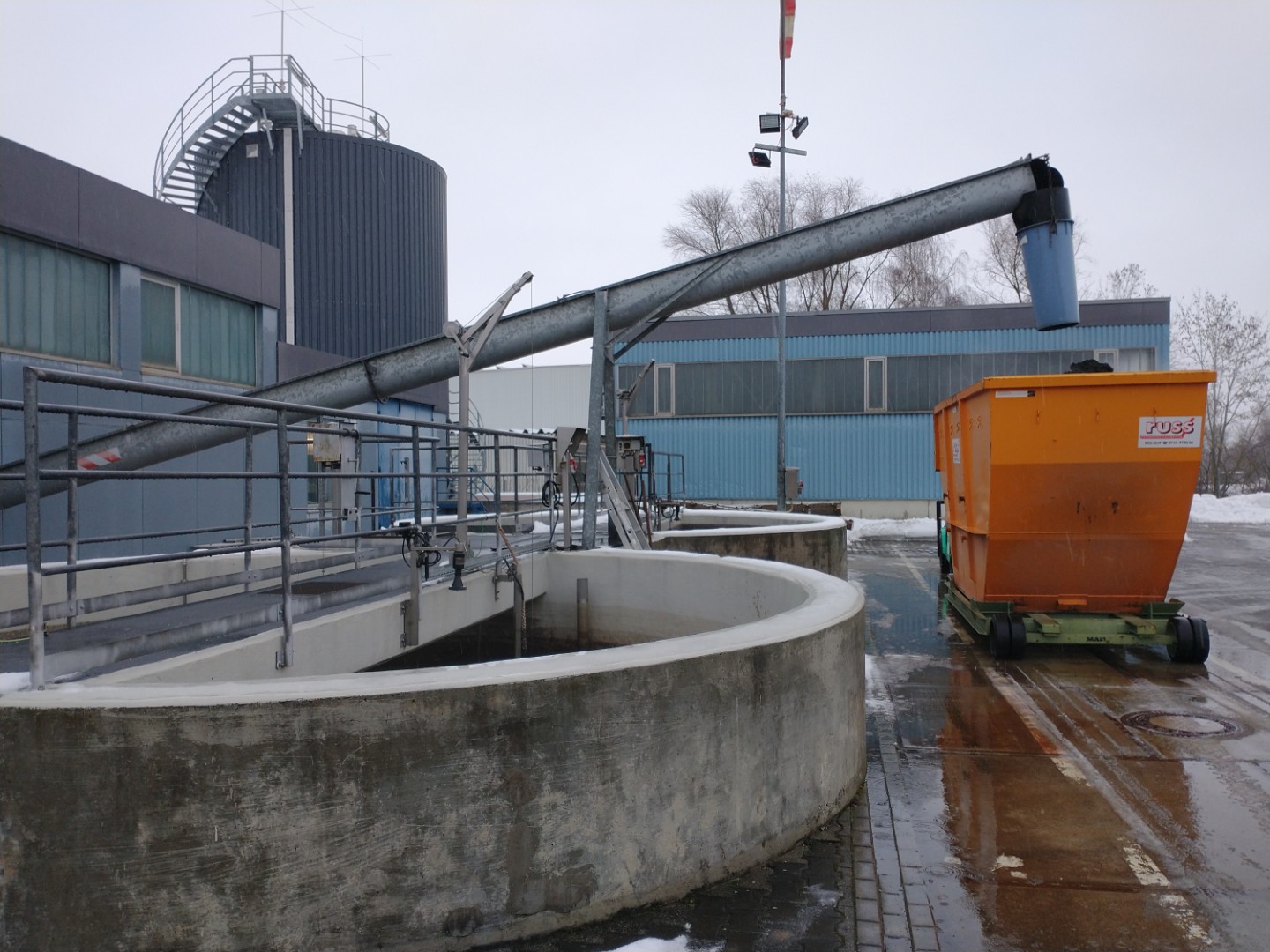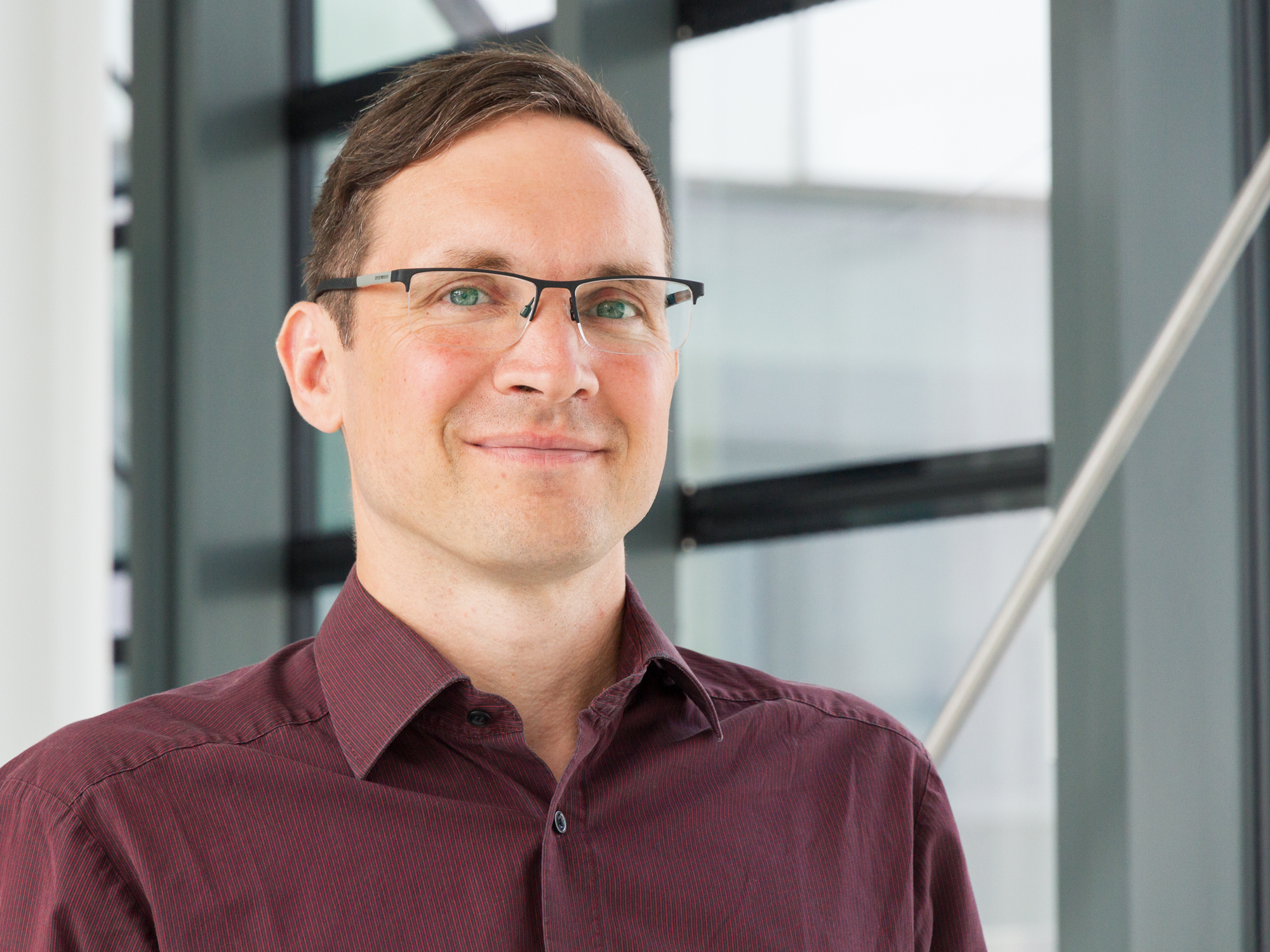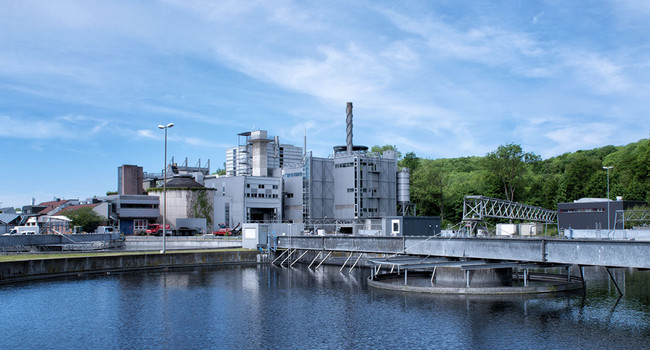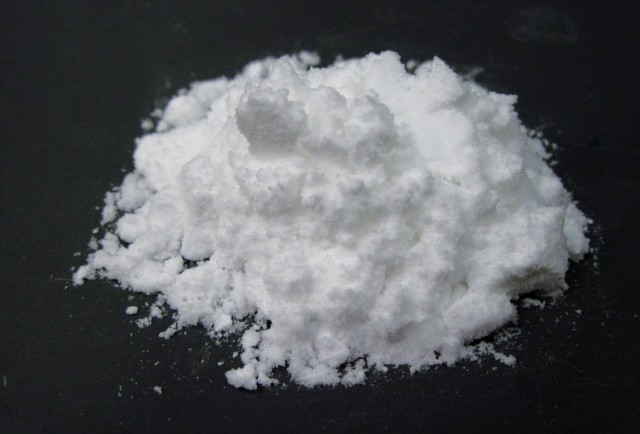Main navigation
Wastewater treatment plants as biorefineries: the RoKKa project
RoKKa, a joint project coordinated by the Fraunhofer IGB, is testing methods for recovering raw materials such as phosphorus and nitrogen compounds to produce fertiliser from municipal and industrial wastewater in a climate-neutral way. These new methods are being investigated under real conditions at wastewater treatment plants in the Ulm area with a view to developing them into sustainable biorefineries.

The main purpose of wastewater treatment plants is to purify wastewater and recover usable water. Against the backdrop of man-made climate change and the global ecological crisis, however, attention is increasingly turning to the recovery of raw materials contained in wastewater.
The goal is to transform wastewater treatment plants into biorefineries from which the essential raw materials contained in wastewater and sewage sludge, such as nitrogen and phosphorus, can be recovered and reused. "Such biorefineries would be components of a circular bioeconomy in which the so-called residual materials can be recycled and refined again so these valuable materials are kept for as long as possible in a new kind of circular economy," explains Dr. Marius Mohr, head of the innovation field Water Technologies and Recovery of Valuable Materials at the Fraunhofer Institute for Interfacial Engineering and Biotechnology IGB in Stuttgart. Functioning as biorefineries, wastewater treatment plants would thus contribute to both raw material security and climate protection.

In the pilot project RoKKa (raw material source sewage sludge and climate protection at wastewater treatment plants) funded by the Baden-Württemberg Ministry of the Environment, Climate Protection and the Energy Sector within the framework of the European Regional Development Fund (ERDF), researchers are testing processes for efficiently and economically recovering nitrogen and phosphorus compounds from wastewater for fertiliser production. The joint project is coordinated by Mohr at the Fraunhofer IGB and is one of five biorefinery projects within the framework of the ERDF funding programme "Bio-Economy Bio-Ab-Cycling" run by the Baden-Württemberg government together with the EU Commission. The ERDF supports economic, territorial and social cohesion within the EU.
In addition to the Fraunhofer IGB, nine other partners from science, industry and the public sector are involved in RoKKa. These include the city of Erbach (Danube) and the Zweckverband Klärwerk Steinhäule (Steinhäule Treatment Plant Administrative Union) as operators of the wastewater treatment plants in the greater Ulm area, where the RoKKa pilot plants for recovering recyclable materials from sewage sludge are located. The project began in late 2021 and will initially run until 31st March 2024.
Recovery of nitrogen and phosphorus

The nitrogen and phosphorus compounds present in high concentrations in the wastewater in wastewater treatment plants are usually removed by biological purification. During this process, the phosphorus and some of the nitrogen are taken up by microorganisms in successively connected clarification tanks under alternating anaerobic (without oxygen) and aerobic (with oxygen) conditions. The microorganisms accumulate in the sewage sludge. A large part of the nitrogen bound as nitrate is converted into nitrogen gas (N2) by microorganisms during a process known as anaerobic denitrification and released into the atmosphere. However, aerobic nitrification also produces nitrous oxide (N2O), a greenhouse gas that damages the atmosphere’s ozone layer and has a climate-damaging potential 300 times greater than carbon dioxide. In a new study, the Swiss water research institute Eawag has found that the importance of nitrous oxide (laughing gas) emissions from wastewater treatment plants has been greatly underestimated. For this reason, the RoKKa pilot project also measures how strongly nitrogen recovery from sewage sludge affects the climate balance of wastewater treatment plants.
At six new pilot and demonstration plants, the researchers involved in the project are testing how nitrogen and phosphorus can be recovered from wastewater streams as raw materials for producing fertilisers. CO2 produced during biogas digestion is captured with the help of an amino acid solution and used for photosynthesis by microalgae that utilise the nutrients contained in the wastewater. The algae biomass is used as an environmentally friendly plant fortifier and for soil improvement, for example in viticulture. Excess CO2 is converted into formate (HCOO-) in an electrosynthesis plant. Formate is a basic chemical used in the chemical industry.

ePhos®, a novel electrochemical process developed and patented by the Fraunhofer IGB, enables the recovery of phosphate and ammonium from wastewater in the form of struvite (ammonium magnesium phosphate). This process works completely without chemicals. Instead, the process uses a sacrificial (which consumes itself in the process) anode made of magnesium that helps the phosphorus to electrochemically precipitate as struvite. Struvite can be used directly as a valuable slow-release fertiliser much sought-after in agriculture. The nitrogen is removed from the sludge water as ammonium in two pilot plants: one plant follows the principle of membrane gas absorption (AmmoRe) with membrane contactors; the second works on the principle of membrane distillation.
Transformation of wastewater treatment plants into sustainable biorefineries
Taken together, the six RoKKa project pilot plants form a basis for not only developing wastewater treatment plants as sources of raw materials, but also for transforming them into biorefineries according to the principles of the circular bioeconomy in the sense of a sustainable circular economy. The plants’ efficiency is validated at the wastewater treatment plant in Erbach (Danube) using the production of recyclables under real conditions from sewage sludge treated in a high-load digester. "Back in 2016, we took the first step towards the bioeconomy by building a high-load digester at our wastewater treatment plant," explains Thomas Schniertshauer from the Erbach municipal planning and building department. "Now we are proud to expand our wastewater treatment plant into a sustainable biorefinery." The catchment area of this wastewater treatment plant includes the city of Erbach southwest of Ulm and its neighbouring communities of Hüttisheim and Oberdischingen with a combined population of about 18,000.
The RoKKa concept for raw material recovery and sustainable CO2 utilisation has the potential of being implemented on a much larger scale at the Steinhäule treatment plant administrative union (Zweckverband Klärwerk Steinhäule). The plant treats the wastewater of about 220,000 inhabitants of the Ulm metropolitan area as well as industrial and commercial wastewater corresponding to the same number of inhabitants (so-called population equivalents). In total, 40 million cubic metres of treated wastewater and 6.1 million kWh of energy are produced per year in the 25 ha Steinhäule treatment plant. 200 t of phosphorus can be extracted annually from the sewage sludge in the Steinhäule treatment plant. At the constituent meeting of the Zweckverband Klärschlammverwertung Steinhäule (ed. note: regional association of cities, municipalities and special-purpose associations from Baden-Württemberg and Bavaria) in September 2019, the chairman Gunter Czisch, who is also Lord Mayor of the city of Ulm, said: "Phosphorus is a scarce and at the same time irreplaceable raw material that is indispensable for food production. According to calculations, the phosphate contained in sewage sludge can replace around 40 percent of German raw phosphate imports." The Lord Mayor pointed out that phosphate recycling also complies with the amendment to the Sewage Sludge Ordinance passed by the German Federal Cabinet and the German Bundestag in 2017, which stipulates that large-scale plants must return phosphorus to the economic cycle in the future. The ordinance further stipulates that the application of sewage sludge for fertiliser purposes needs to end, thus reducing the input of harmful phosphorus and nitrogen concentrations into the soil.
The project "RoKKa – Rohstoffquelle Klärschlamm und Klimaschutz auf Kläranlagen" (raw material source sewage sludge and climate protection at wastewater treatment plants) involves the following institutions and companies:
Fraunhofer IGB Stuttgart (coordination), city of Erbach, Danube, Umwelttechnik BW GmbH Stuttgart, University of Stuttgart, University of Kassel, TU Kaiserslautern, Deukum GmbH Frickenhausen, Nanoscience for life GmbH & Co. KG Wiesbaden, SolarSpring GmbH Freiburg und ZV Klärwerk Steinhäule Ulm.
The project receives funds through the European Regional Development Fund (ERDF) and the Baden-Württemberg Ministry of the Environment, Climate Protection and the Energy Sector.